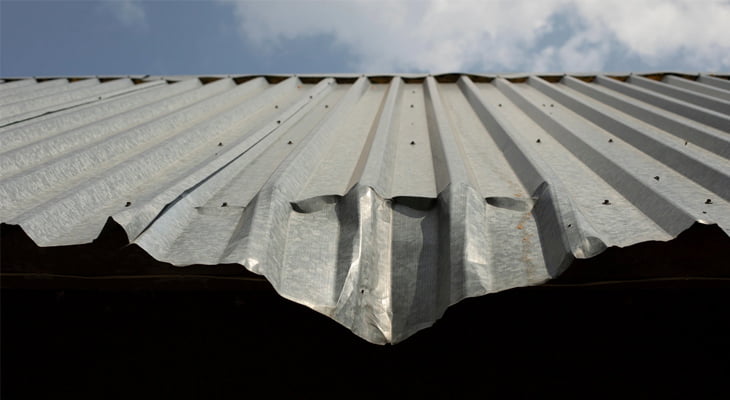
Metal roofs are lauded for their durability and longevity, but even the sturdiest materials can succumb to wear and tear. Whether due to environmental factors, improper installation, or simply the passage of time, metal roofing can experience various issues. Understanding these types of damage is crucial for homeowners with metal roofs.
If you suspect your metal roof might be compromised, don’t hesitate to consult with qualified metal roofing contractors in Edmonton for a professional assessment and recommendations. Let’s discuss some of the most common roofing damages and how timely repairs can be effective.
Panel Issues
The metal panels themselves are the workhorses of your roof. Denting, scratches, and corrosion can all compromise their integrity. Dents can be caused by hail or by someone walking on the roof.
Scratches can occur during installation or from windblown debris. Corrosion, typically seen as rust on steel panels, is caused by exposure to moisture and can be accelerated by acidic rain or improper ventilation.
Left unattended, these issues can lead to leaks and further deterioration. Regular inspections can help identify minor denting or scratches early on, allowing for repairs before they become bigger problems. For corrosion, choosing a metal roof with a high-quality, weather-resistant finish can significantly extend its lifespan.
Also Read: Understanding The Residential Metal Roofing Installation Process
Fastener Failure
The fasteners, screws or nails that hold the metal panels in place play a vital role in the roof’s structural integrity. Over time, fasteners can loosen due to several factors. Thermal expansion and contraction caused by temperature fluctuations can cause them to work themselves loose.
Improper installation, using the wrong size or type of fastener, can also lead to premature failure. Loose or missing fasteners can allow the panels to lift and flap in the wind, potentially causing further damage to the panels themselves and creating openings for leaks.
Regular inspections should include checking the tightness of fasteners around the perimeter of the roof and around any seams or ridges. Loose fasteners can often be simply retightened.
However, if the fasteners themselves are damaged or missing, a qualified professional will need to replace them to ensure the roof’s continued performance.
Seam Problems
The seams are the interlocking joints between the metal panels that form the watertight barrier of your residential metal roofing. There are two main types of seams – standing seams, which are crimped together vertically, and flatlock seams, which are mechanically seamed together.
Issues at the seams can be some of the trickiest to identify for the untrained eye, but they can also be some of the most critical to address quickly.
Improper seaming during installation or damage to the seam over time can cause gaps to open. These gaps can allow water to infiltrate the underlying roof deck, leading to leaks, mould growth, and even structural damage.
Flashing & Drainage Issues
Flashing is the thin sheets of metal installed around roof penetrations like chimneys, vents, and skylights. It’s also used in valleys where two roof planes meet. Proper flashing is essential for directing water away from these vulnerable areas and preventing leaks.
Drainage refers to gutters and downspouts channelling water away from the roof and your home’s foundation.
Flashing problems can arise from improper installation, using the wrong materials, or deterioration due to age and exposure to the elements. Signs of flashing issues include water stains on ceilings or walls near roof penetrations and rust or cracks on the flashing itself.
Weather-Related Damage
While residential metal roofing is known for its resilience against harsh weather, extreme weather events can still cause some damage. Here’s what to look out for:
- Hail: Large hail stones can cause dents in the metal panels. Minor dents may be purely cosmetic, but larger dents can compromise the panel’s integrity and potentially lead to leaks.
- High Winds: Strong winds can cause panels to lift and flap, potentially loosening fasteners or even tearing them away from the roof structure. Windblown debris can also impact the roof, causing scratches or dents.
- Snow and Ice: Heavy snowfall can significantly weigh down your roof. While metal roofs are generally well-suited for shedding snow, ice dams can form at the eaves, preventing proper drainage and potentially causing water to back up under the shingles and infiltrate the roof deck.
About Stahl Roof Systems
Welcome to Stahl Roof Systems, Edmonton’s premier authority on metal roofing. Our certified contractors bring top-tier qualifications, extensive expertise, and a commitment to meeting all your roofing needs. At Stahl Roof Systems, we prioritize exceptional customer service. Explore our comprehensive range of services today.
Looking for expert metal roof installation? Upgrade your standards with us. Contact us now!
